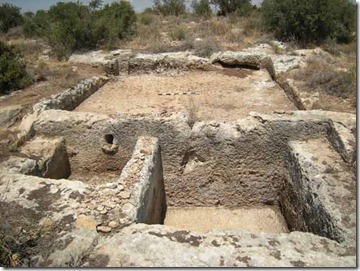An agricultural complex one mile northeast of the Church of the Nativity of Bethlehem in Khirbet el-Qatt was in use during the Roman period and included cisterns, terrace walls, watchman’s huts, winepresses, olive presses, and a coin from the time of Herod.
Some ancient pits excavated in Ramat Aviv in Tel Aviv had remains of mountain gazelle, dogs, and a donkey.
A quarry of unknown date and sections of plastered wall and floors from a Byzantine monastery were excavated along Nablus Road north of the Old City of Jerusalem.
Two squares were excavated on the western slope of Jonah’s hometown of Gath Hepher, revealing remains from the Early Bronze, Middle Bronze, and Iron II. If the excavators were a little more media-savvy, they could have made their fame and fortune showing off the cooking pot and jar that were certainly used by Jonah’s mother.
Excavations on the edge of Tel Yafo (biblical Joppa) revealed lots of Iron Age pottery (the canteen Jonah dropped on his way to the boat?) as well as finds from the Hellenistic, Early Islamic, Crusader, and later periods.
Vandals excavated a winepress in Horbat Pezaza but they left a second one untouched for those paid by the day rather than the piece. The archaeologists dated the winepresses to the Late Roman and Byzantine period.
